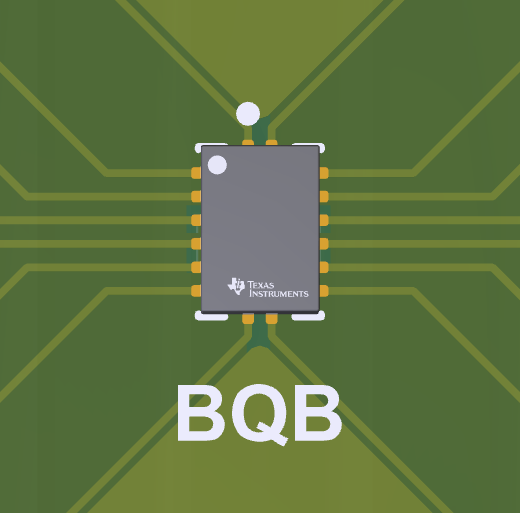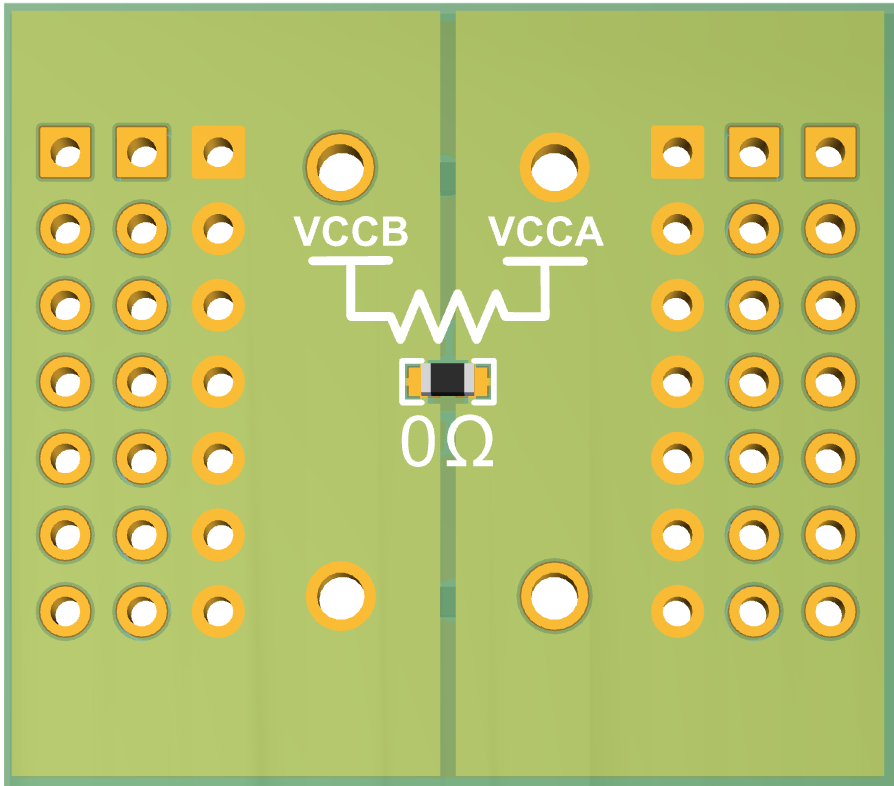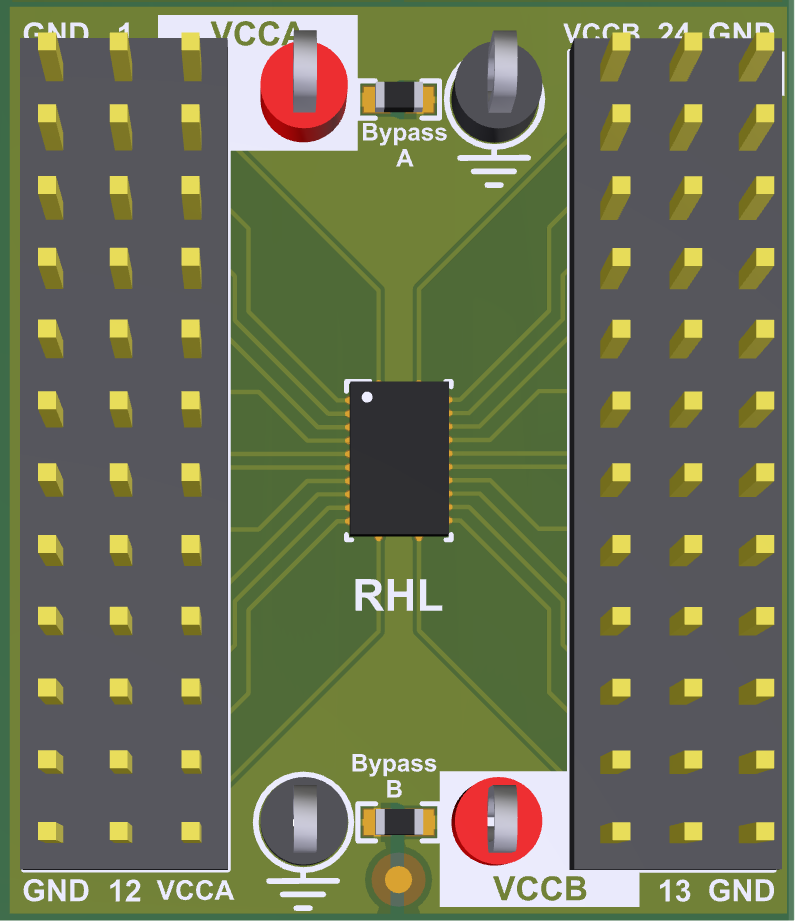SCEU022A September 2020 – September 2022
2.2 Hardware Setup
This section covers the five steps needed to get started when using this EVM to evaluate an NL logic or translation device, which are as follows:
- Identify the desired package for the device being evaluated. As stated previously, this EVM has nine sections each of which contains a footprint for one of the packages mentioned. Break off the selected section (optional).
- Solder down the device. Figure 2-2 shows an example of proper placement.
 Figure 2-2 BQB
Placement Example
Figure 2-2 BQB
Placement Example - Ensure the EVM is
configured accordingly for dual supply or single supply
device. The EVM comes default configured for dual supply
devices, but is easily configured using a 0-Ω resistor for
single supply devices. Figure 2-3 shows how this is done.
 Figure 2-3 Single Supply Configuration
Figure 2-3 Single Supply Configuration - Interface with device pins. The kit includes
twelve 12-pin headers and eight supply test points which
will allow the user to fully populate two sections (headers
can be broken apart for lower pin counts). An example of
this, with the addition of bypass capacitors for the
supplies, as shown in Figure 2-4.
 Figure 2-4 Fully Populated Section
Figure 2-4 Fully Populated Section - Before applying power to the EVM, ensure the proper supply configuration is in place to avoid shorting two supplies together.